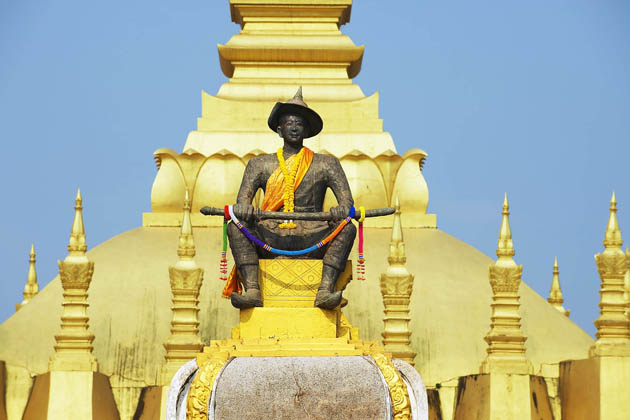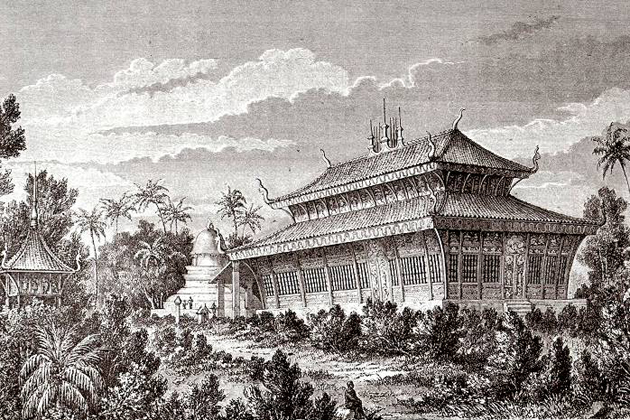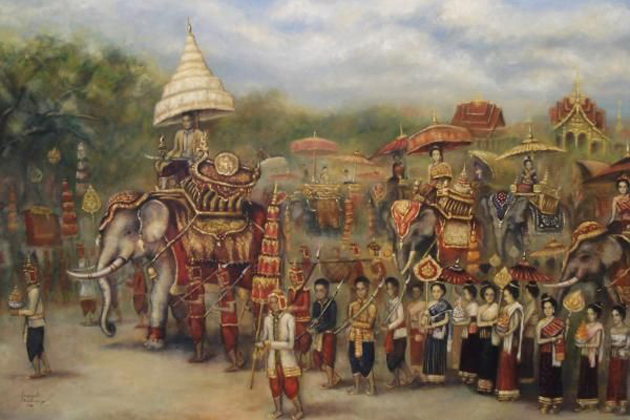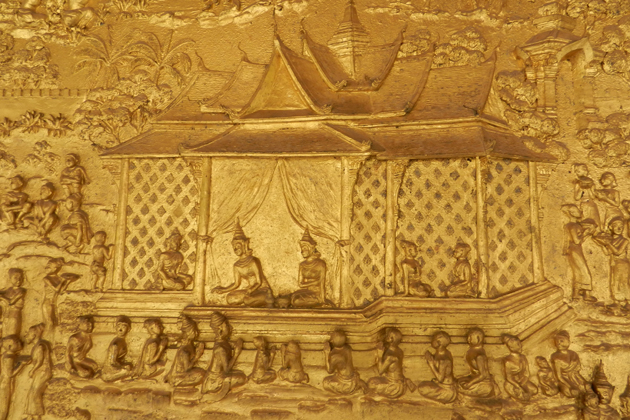Lan Xang is the first official kingdom in Laos in the 13th century. For about 350 years, it has been one of the largest kingdoms in Southeast Asia, which is the best present for the country’s name “The country of millions of elephants”. The establishment of Lan Xang had such a strong impact on the development of Laos nowadays.

Foundation of Lan Xang Kingdom
Whenever people mention Lan Xang, Laotian always tells us about Fa Ngum, an important person in Laotian history. Fa Ngum was born in 1319 and belongs to Muang Sua’s royalty (in Luang Prabang). His grandfather is Souvanna Khampong, the king of Muang Sua and his father was Chao Fa Ngiao, the crown prince. During that period, Khmer Empire in the south is very developed and powerful; therefore, since he was a child, Fa Ngum had been sent to Khmer Empire to live as a son of King Jayavarman IX and married the princess Keo Kang Ya. In 1343, in Muang Sua, King Souvanna
Khampong died which began the period of political instability. Six years later, in 1349, Fa Ngum was granted an army known as the “Ten Thousand” to take back the crown in Muang Sua. At the same time, Khmer Kingdon was weakened gradually, two other nations Lanna and Sukhothai had existed in Khmer territory and in the west, the Siamese was growing very fast and established Ayatthaya Kingdom (which is Thailand nowadays).

After many years of fighting, Fa Ngum took over Champassak, Muang Sua (Luang Prabang). In 1353, Fa Ngum became the king of Laos. He names his kingdom Lan Xang Hom Khao, which means “The Land of a Million Elephants and the White Parasol”. Fa Ngum continued his expansion to the area around the Mekong River and begin to move the south to defeat Lanna and force Lanna to be under influence of Muang Sua.
After all, Vientiane still remained independent and powerful, right at that time, Ayutthaya, arising power in the east was threatening the peaceful Vientiane. In 356, Fa Ngum headed to the south and took over Vientiane and surrounding plains. Ayutthaya Kingdom was afraid of Lan Xang and sent the princess Nang Keo Lot Fa to be the second wife of Fa Ngum.

By 1357, Lan Xang had become the largest kingdom in South East Asia. Its territory stretches from the borders of Sipsong Panna with South China to Khong Island, from the eastern border along the Annamite Range with Dai Viet (Vietnam) to the western border Khorat Plateau.
Lan Xang Kingdom (1354-1707)
Officially, the establishment of the Lan Xang Kingdom was recorded from 1354, the first conquer of the King Fa Ngum. Since then, Lan Xang has been a sovereign kingdom for 350 years. During this time, the kingdom had received many attacks from its neighbors. The first invasion was from Dai Viet (Vietnam) in 1479, which was not successful but left the capital Luang Prabang in severe damage. Then, in the 1540w, there was a dispute between Lanna, Burma (Myanmar), and Ayutthaya (later is Thailand), which later makes Lan Xang be an alliance with Lanna against Burma and Ayutthaya. In 1547, the kingdoms of Lan Xang and Lanna were unified under the dynasty of Photisarah of Lan Xang and his son Setthathirath in Lanna. Setthathirath later became the king of Lan Xang in the 1550s, one of the greatest kings of Lan Xang.

Since Lan Xang and Lanna were unified, in 1560, the king moved the capital from Luang Prabang to Vientiane in order to maintain a good defensive location against Burma. In 1564, the king officially conquered the Kingdom of Lanna and destroyed the city of Ayatthaya. The war continued taking place in Lan Xang during two Lan Xang’s successful campaigns against Burmese invasions. Lan Xang was independent and stable until 1572. After two times of unsuccessful with Lan Xang’s conquer finally, in 1573, the Burmese made it. Therefore, Lan Xang became a dependent state of Burma until 1591 when the son of King Setthathirath was able to regain the kingdom’s freedom.
After many instability and threat, Lan Xang Kingdom reached its political and economic power in the 17th century under the reign of King Sourigna Vongsa from 1637 to 1694. When the king passed away in 1694, dispute and conflict happened in the kingdom. In 1707, the united Lan Xang Kingdom is separated and divided into three regional kingdoms. Laos’ history had entered a new period, the period of the Regional Kingdom.
By immersing yourself in the stories and legends of Lan Xang, you gain a deeper appreciation for the resilience, accomplishments, and cultural contributions of this once-great empire. Let your Laos tour be a journey through time, as you uncover the secrets and marvel at the enduring legacy of the Lan Xang Kingdom.
